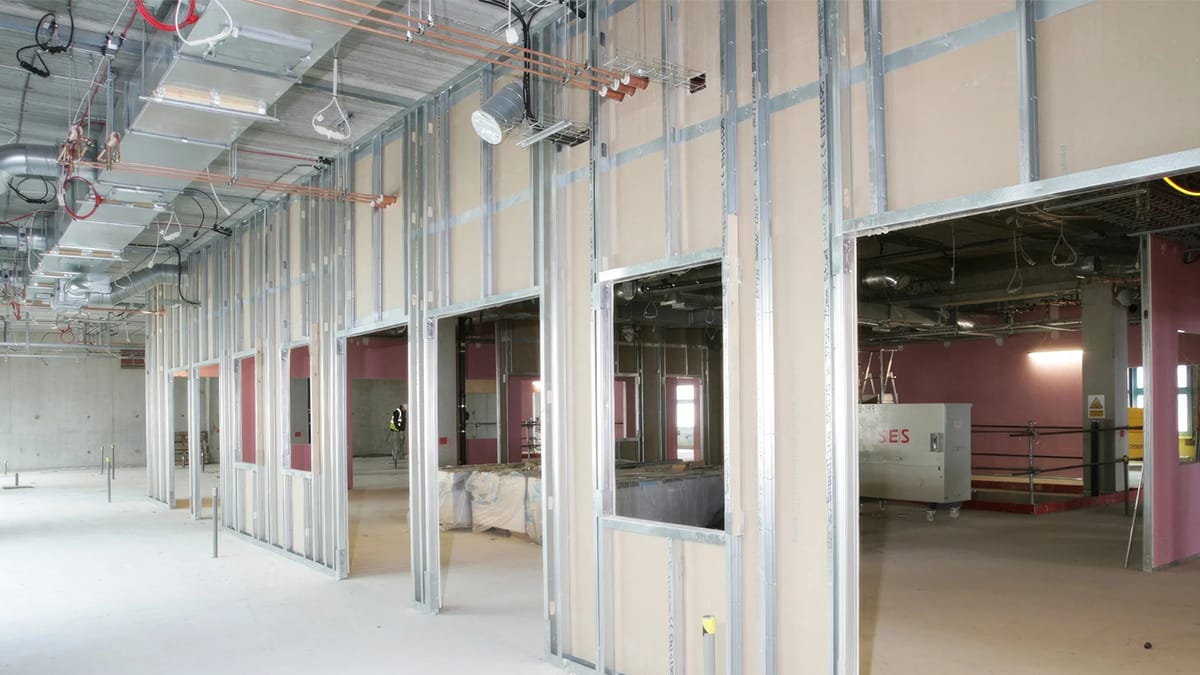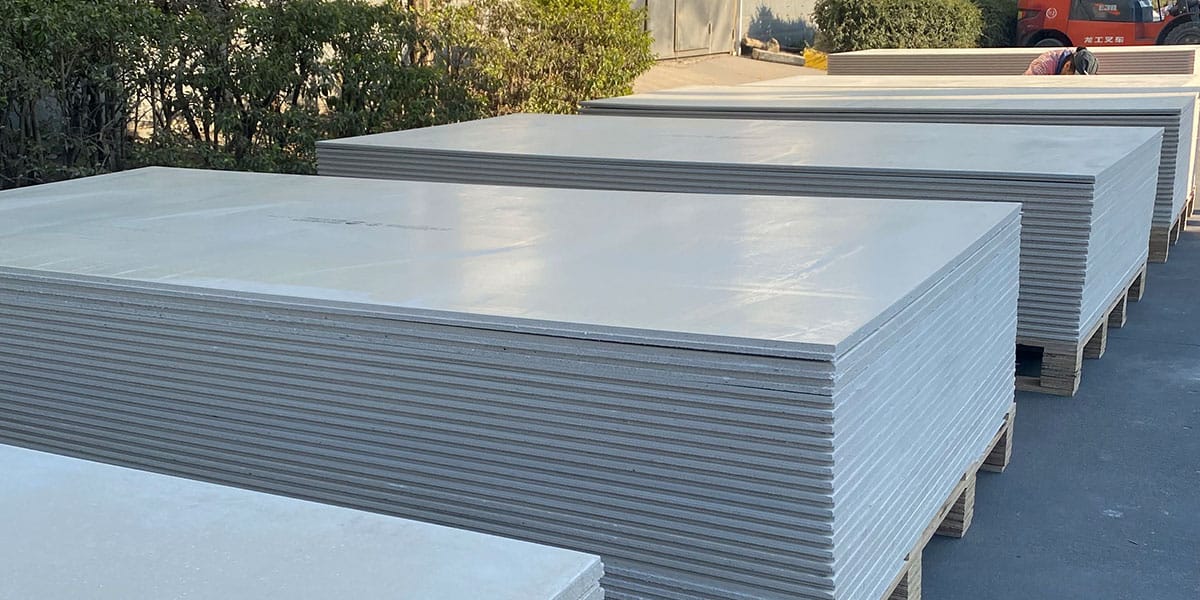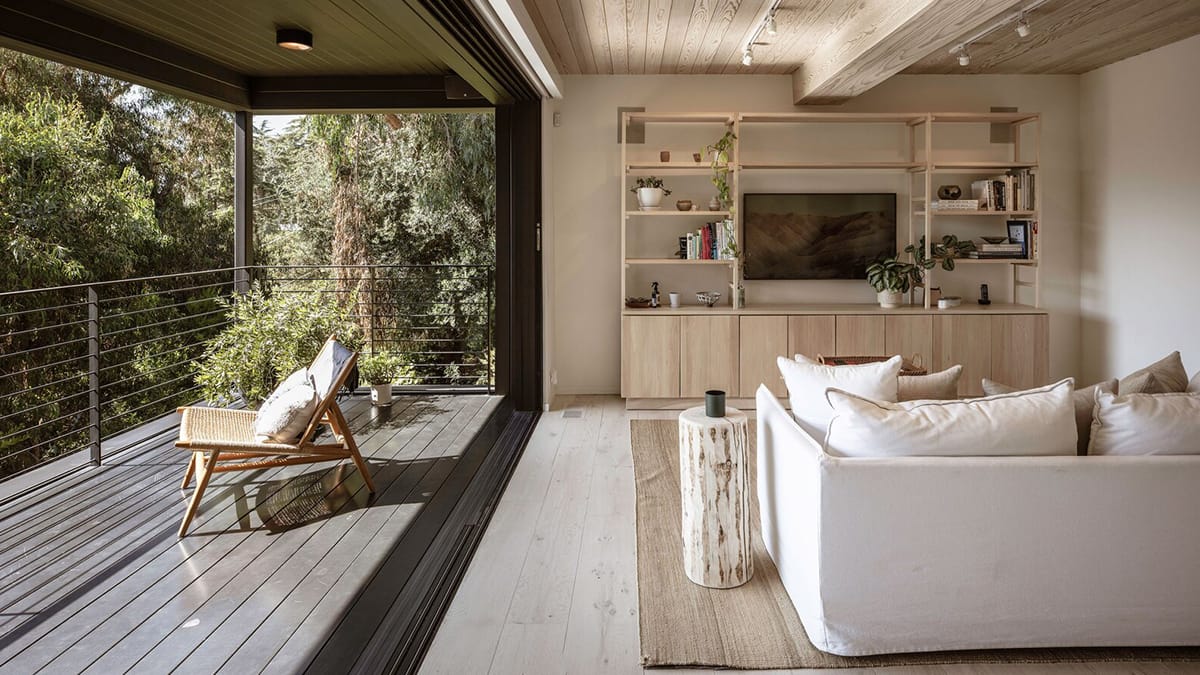
04 Oct Comparing Cement Backer Board Alternatives for 2025
Table of Contents
Looking for a better option than heavy cement backer board? You have great choices in 2025. Foam backer boards keep things light and easy to cut. Fiber cement boards offer strength and good fire resistance. MgO boards handle moisture well and resist mold. Glass mat gypsum boards work for quick installs. DensShield stops water and mold. Even plywood can save you money for some projects. These options help you avoid problems with weight, tricky installation, and high costs.
Key Takeaways
Look at lighter backer boards like foam and glass mat gypsum. These are easier to carry and put in place. Pick fiber cement or MgO boards if you need strong boards. These work well in wet places like bathrooms. Think about how your materials affect the environment. Many new boards are made to be better for nature. Check how much your choice will cost over time. Good boards can help you spend less on fixing and keeping them up. Make sure the backer board fits your project. Focus on how it handles water, how heavy it is, and how easy it is to install.
What Is a Backer Board?
Uses in Construction
Backer board is used in many building jobs. It gives a strong base for tile or stone. You see it in bathrooms, kitchens, and laundry rooms. Builders use it to keep water out of walls and floors. It helps tiles stick well and stops cracks from happening.
Here’s what backer board does in today’s construction:
Function | Description |
|---|---|
Makes a water-resistant surface for tiles in wet places like bathrooms. | |
Reinforcement | Makes the base stronger so tiles don’t crack and stay stuck. |
Suitability for Environments | Works in homes and businesses, making things last longer. |
It keeps out moisture, so it works in damp rooms. The rough surface helps tiles hold tight. If you want a tough and waterproof finish, this is a good choice.
Common Drawbacks
Backer board has some problems. It can be heavy and hard to move. Cutting it can be messy and slow. Sometimes, it costs more than you think, especially for big jobs. If you use cement backer board, you may need special tools and more work.
Here’s a common siding backer board specification:
Specification | Description |
|---|---|
Type | Siding backer board |
Material | Foam plastic insulation |
Maximum Thickness | |
Thermal Barrier Requirement | Not needed if separated by 2 inches (51 mm) of mineral fiber insulation or something similar |
Tip: If you want something lighter and easier to put in, try newer options. These can help you save time and work, especially for DIY jobs.
Why Choose Alternatives?
 Material Innovations
Material Innovations
There are more backer board choices now. New materials make jobs safer and easier. In the last two years, companies made boards lighter and stronger. They also made them better for the planet. Here’s a look at what is new:
Material Type | Key Features | Companies Involved |
|---|---|---|
Strong, keeps out water, saves energy, good for Earth | Wonderboard, CertainTeed | |
Fiber Cement Board | Makes less pollution, meets green rules | Various manufacturers |
Magnesium Oxide Board | Light, does not soak up water, does not burn, can be recycled | Various manufacturers |
Foam boards keep heat in and water out. Magnesium oxide boards are light and do not burn. They work well where fire safety is important. Many companies use materials that do not pollute much. You can pick boards that fit your job and help you build smarter.
Reasons to Switch
Many people want something better than cement backer board. Contractors say old boards are heavy and hard to move. They can break if you do not install them right. Making cement boards also hurts the planet because it makes lots of pollution.
Here are the main reasons people switch:
Lighter boards are easier to carry and use.
New boards stop water and mold better.
Many boards are simple to cut and put in.
Boards that are good for the Earth help you build green.
Note: Picking the right board saves time and money. You get a safer and longer-lasting job with less trouble.
Backer Board Alternatives
Foam Backer Board
Foam backer board is popular for tile jobs in 2025. You can carry it easily with one hand. You can cut it with a utility knife. This board keeps water out of your home. It helps keep rooms warm and quiet. It blocks sound from getting through walls. Foam backer board saves you time and energy. It is a smart choice for many projects.
Here’s how foam backer board compares to cement backer board:
Feature/Benefit | Foam Backer Board | Cement Backer Board |
|---|---|---|
Insulation | Excellent thermal resistance, reducing energy consumption and costs. | N/A |
Moisture Resistance | Does not absorb water, preventing mold and rot, ideal for moist areas. | N/A |
Lightweight | Easier to handle and transport, reducing physical strain during installation. | N/A |
Easy Installation | Can be cut easily and simplifies the installation process. | N/A |
Stability | Offers dimensional stability, minimizing the risk of cracks or damage. | N/A |
Soundproofing | Provides sound insulation, reducing noise transmission. | N/A |
Compatibility with Tiles | Commonly used as an underlayment for tile installations, enhancing longevity. | N/A |
Cost-effective | Reduces labor costs and contributes to long-term energy savings. | N/A |
Note: Foam backer board does not hold heavy loads well. If you need extra strength, you should add more support.
Best Use Cases:
Bathroom walls and floors
Shower surrounds
DIY tile projects
Places where you want fast, easy installation
Fiber Cement Board
Fiber cement board is strong and lasts a long time. You can use it in wet places like bathrooms and kitchens. This board does not rot or swell when wet. It stays tough even outside in bad weather. You can trust it for many years.
Pros:
Handles tough weather and pests
Lasts over 25 years
Works inside and outside
Cons:
Heavier than foam boards
Needs special tools to cut
Costs more than plywood
Best Use Cases:
Bathrooms, kitchens, laundry rooms
Basements
Outside walls
Busy areas
If you want a board that fights water and lasts long, fiber cement board is a good pick.
MgO Backer Board
MgO backer board is changing how people build things. This board does not burn or soak up water. It does not grow mold. It is safe for your health and good for the planet. MgO boards use natural minerals and need less energy to make. They help you build in a green way.
Advantage | Description |
|---|---|
Durability | High density structurally rated, ideal for high traffic areas. |
Water Resistance | Does not absorb water, making it suitable for high-humidity areas like bathrooms and kitchens. |
Fire Resistance | Provides fire ratings, enhancing safety in residential and commercial projects. |
Eco-friendliness | Made from inorganic materials, impervious to mold and mildew growth. |
Impact Resistance | More impact-resistant than gypsum drywall, suitable for high-traffic areas. |
Mold and Mildew Proof | Inorganic nature prevents mold and mildew growth, ensuring a healthier environment. |
Weather Resistance | Withstands rain, wind, heat, and cold, maintaining stability in harsh conditions. |
Pros:
Safe for health
Termite resistant
Recyclable and eco-friendly
Works inside and outside
Cons:
May cost more than basic boards
Harder to find in some stores
Best Use Cases:
Busy areas
Bathrooms and kitchens
Outside walls
Projects needing fire safety
MgO backer board helps you build strong, safe, and green.
Glass Mat Gypsum Board
Glass mat gypsum board is easy to put in and works in wet places. It fights mold and does not break down when wet. Builders like it for quick jobs because it is light and easy to cut. You must follow ASTM C1178 if you use it for tile backing.
Feature | Glass Mat Gypsum Board | Cement Board | Fiberglass Gypsum Board |
|---|---|---|---|
Mold Resistance | Excellent | Moderate | Excellent |
Durability in Wet Conditions | High | Very High | High |
Installation Ease | Easy | Moderate | Easy |
Cost | Higher | Moderate | Higher |
Surface Finish | Rougher | Smooth | Smooth |
Pros:
Great mold resistance
Stays strong in wet places
Easy to install
Fire resistant
Smooth finish
Cons:
Costs more
Surface is rougher
Can be itchy to touch
Not as strong as cement board
Fewer design choices
Best Use Cases:
Bathrooms and showers
Laundry rooms
Fast renovation jobs
Areas needing mold protection
If you want a board that goes up fast and keeps mold away, glass mat gypsum board is a good choice.
DensShield Board
DensShield board is special because it has a waterproof acrylic coating. This board does not dissolve in water, so it lasts longer in wet places. DensShield is lighter than cement boards. You can carry and install it without much effort.
Unique Features:
Waterproof acrylic coating
Lighter weight
Does not dissolve in water
Easy to handle
Pros:
Great for wet places
Simple to install
Strong and lasts long
Stops mold and water damage
Cons:
Costs more than basic drywall
Not for heavy-duty outside use
Best Use Cases:
Shower walls
Bathroom floors
Laundry rooms
Any place with lots of moisture
DensShield board helps you keep water and mold out while making installation easier.
Comparison Overview
 Performance
Performance
You want a backer board that stands up to daily use. Some boards handle weight and stress better than others. Plywood bends a little but holds heavy loads, making it great for places with lots of movement. Magnesium oxide (MgO) boards are super tough and last a long time, even in tall buildings. Fiber cement boards stay strong for decades and block fire and bad weather. Here’s a quick look at how these options compare:
Sheathing Type | Strength & Durability Highlights | Extra Benefits |
|---|---|---|
Plywood | Holds heavy weight, bends without breaking | Reusable, blocks bad weather |
MgO Board | Very tough, fire-resistant, lasts long | Safe for earth, used in big jobs |
Fiber Cement | Strong, resists rot and mold, lasts 50 years | Needs little care, looks nice |
Tip: If you need something for high-traffic or tough spots, MgO and fiber cement boards are your best bet.
Moisture Resistance
Moisture can ruin your project if you pick the wrong board. DensShield has a water-resistant core and a fiberglass surface that fights mold. MgO boards do not soak up water and stop mold and mildew. Glass mat gypsum boards work well in wet areas. Fiber cement panels resist rot, fire, and termites. Plywood does better than OSB but still needs sealing in very wet places.
Material | Moisture Resistance Features |
|---|---|
DensShield | Water-resistant, mold protection |
MgO Board | Resists water, mold, mildew |
Glass Mat Gypsum | Good for wet areas |
Fiber Cement | Durable, resists rot and pests |
Plywood | Better than OSB, needs sealing in wet spots |
If you’re working in a bathroom or laundry room, choose a board with strong moisture resistance.
Installation
You want a board that makes your job easier. Foam backer boards are light and simple to cut with a utility knife. DensShield is also easy to handle and install. Fiber cement and MgO boards are heavier and need special tools. Plywood is easy for most DIY projects, but you must seal it in wet areas. Glass mat gypsum boards go up fast and work well for quick jobs.
Foam and DensShield: Easy to carry and cut
Fiber cement and MgO: Heavy, need special tools
Plywood: Simple for DIY, needs sealing
Glass mat gypsum: Fast install, good for renovations
Cost
Cost matters for every project. Drywall has the lowest initial cost, but you pay more for repairs and upkeep. MgO and cement boards cost more up front and for labor, but they need less maintenance. Plywood and fiber cement boards fall in the middle. Fiber cement boards cost more to buy but save you money on repairs.
Material | Initial Cost | Labor Cost | Long-Term Value | Maintenance Cost | Repair Cost |
|---|---|---|---|---|---|
Drywall | Low | Moderate | High | High | High |
MgO Board | High | High | Moderate | Low | Low |
Cement Board | High | High | Moderate | Low | Low |
Plywood | Moderate | Moderate | Low | Low | Low |
Fiber Cement Board | High | Moderate | Low | Low | Low |
Think about your budget and how much work you want to do later. Spending more now can save you money in the future.
Choosing the Right Backer Board
 Application Area
Application Area
Where you plan to use your backer board matters a lot. Wet areas like bathrooms or kitchens need strong boards that fight water and mold. If you want to install heavy tiles, you should pick a board that can hold the weight without sagging. Lighter boards work well for DIY jobs because you can carry and cut them easily. Here’s a quick guide to help you match the board to your project:
Factor | Description |
|---|---|
Location | Pick materials for the area; cement board works best in wet spots. |
Weight of the Tiles | Make sure the board supports heavy tiles. |
Moisture Exposure | Use durable boards in high-humidity places to stop water damage. |
Ease of Installation | Lighter boards like fiber cement make DIY projects simpler. |
Cost | Think about long-term savings; good boards may cost more now but save you trouble later. |
Tip: Always check if your project needs extra moisture protection or fire safety.
Key Factors
You want your project to last and look great. Some boards work better for certain jobs. If you’re doing a DIY project, pick a board that’s easy to install and cut. Professionals often choose boards with high moisture resistance and durability. Here are the most important things to think about:
Moisture resistance
Durability
Ease of installation
Compatibility with tile installation
Insulation properties
Environmental impact
Criteria | DIY Projects | Professional Installations |
|---|---|---|
Moisture Resistance | High | Very High |
Durability | Moderate | High |
Ease of Installation | Very High | Moderate |
Compatibility with Tile | High | Very High |
Insulation Properties | Low | Moderate |
Environmental Impact | Moderate | High |
If you want a board that’s simple to use, foam or glass mat gypsum boards are good picks. For tough jobs, MgO or fiber cement boards work best.
Budget
Your budget shapes your choices. You might want to save money, but cheaper boards like drywall need more repairs and don’t last as long. Boards like cement or tile backer boards cost more up front, but they resist water, mold, and damage. This means you spend less fixing things later.
Cement and tile backer boards last longer and need less care.
These boards help you avoid water and mold problems, saving you money over time.
Think about how much you want to spend now and how much you want to save later. Picking the right board helps you get the best results for your home.
You can pick from many backer boards in 2025. Foam board and glass mat gypsum are light and easy to use. These work well for small spaces and DIY projects. Allura fiber cement and cement boards stop water in wet areas. MgO boards and fiber cement help you save money on big jobs. They last a long time and stay strong.
Remember: Always measure before you start. Use the right fasteners for your board. Make sure seams do not line up for a better finish.
Resource Type | Description |
|---|---|
Gives strong, water-resistant protection for fixing up rooms. | |
Installation Instructions & Technical Docs | Easy guides show you each step for good results. |
Market Report | Find new trends and tips for picking your board. |
FAQ
What’s the easiest backer board for DIY projects?
Foam backer board is your best bet. You can cut it with a utility knife. It’s light, so you can carry it without help. You’ll finish your project faster and with less mess.
Can I use plywood as a backer board in wet areas?
Plywood works in dry spots. It’s not great for bathrooms or showers. Water can make it swell or rot. If you want to avoid problems, pick a board made for moisture.
How do I know which board is mold-resistant?
Look for boards with mold protection on the label. MgO, DensShield, and glass mat gypsum fight mold best. You’ll see “mold-resistant” or “mildew-proof” in the product details.
Tip: Always check the manufacturer’s specs before you buy.
Is fiber cement board safe for outdoor use?
Yes, you can use fiber cement board outside. It stands up to rain, wind, and bugs. You’ll get a strong surface that lasts for years. Make sure you follow the install guide for best results.

 Material Innovations
Material Innovations Performance
Performance Application Area
Application Area